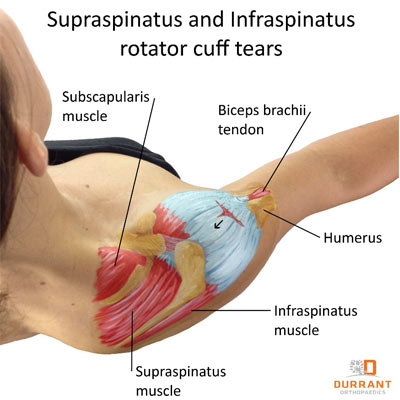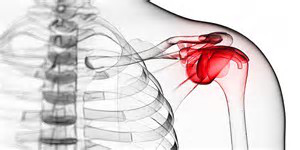
Rotator Cuff Strain
Rotator cuff is a group of four small muscles which act to both stabilize and move. The rotator cuff is a group of small muscles which act to stabilize and rotate the shoulder joint. A rotator cuff strain refers to a minor tear in one or more of these muscles. Rotator cuff muscles can be strained by a forceful twist of the arm or during any quick shoulder movement, especially if done over the head. The most important time in the treatment of a rotator cuff strain is the first 24–48 hours. This is when bleeding and swelling around the injured muscle is most active. Although swelling is a necessary step in the healing process, too much can delay healing and cause further tissue damage. To control the swelling you should rest the shoulder and apply covered ice. This should be continued until you consult a sports medicine professional or Physiotherapist within the first couple of days post injury.

Frozen Shoulder
Frozen shoulder refers to inflammation and scarring of the ligamentous capsule which surrounds the shoulder joint. The exact cause of frozen shoulder is not well known. However, it tends to occur in middle aged populations after some form of irritation or injury to the shoulder joint. The deep, stabbing pain elicited by a Frozen shoulder typically limits almost all shoulder range of motion, causing people to protect their arm and neglect to use it. If you have a frozen shoulder you shouldn’t ignore the problem. The longer you leave the condition without treatment, the worse it may become. This may make your pain and restriction in movement worse and prolong your recovery. Management of frozen shoulder is commonly aimed at reducing your pain and improving your shoulder range of motion. It may involve the use of anti-inflammatory medications, electrotherapy treatment, and stretching, strengthening and range of motion exercises.
